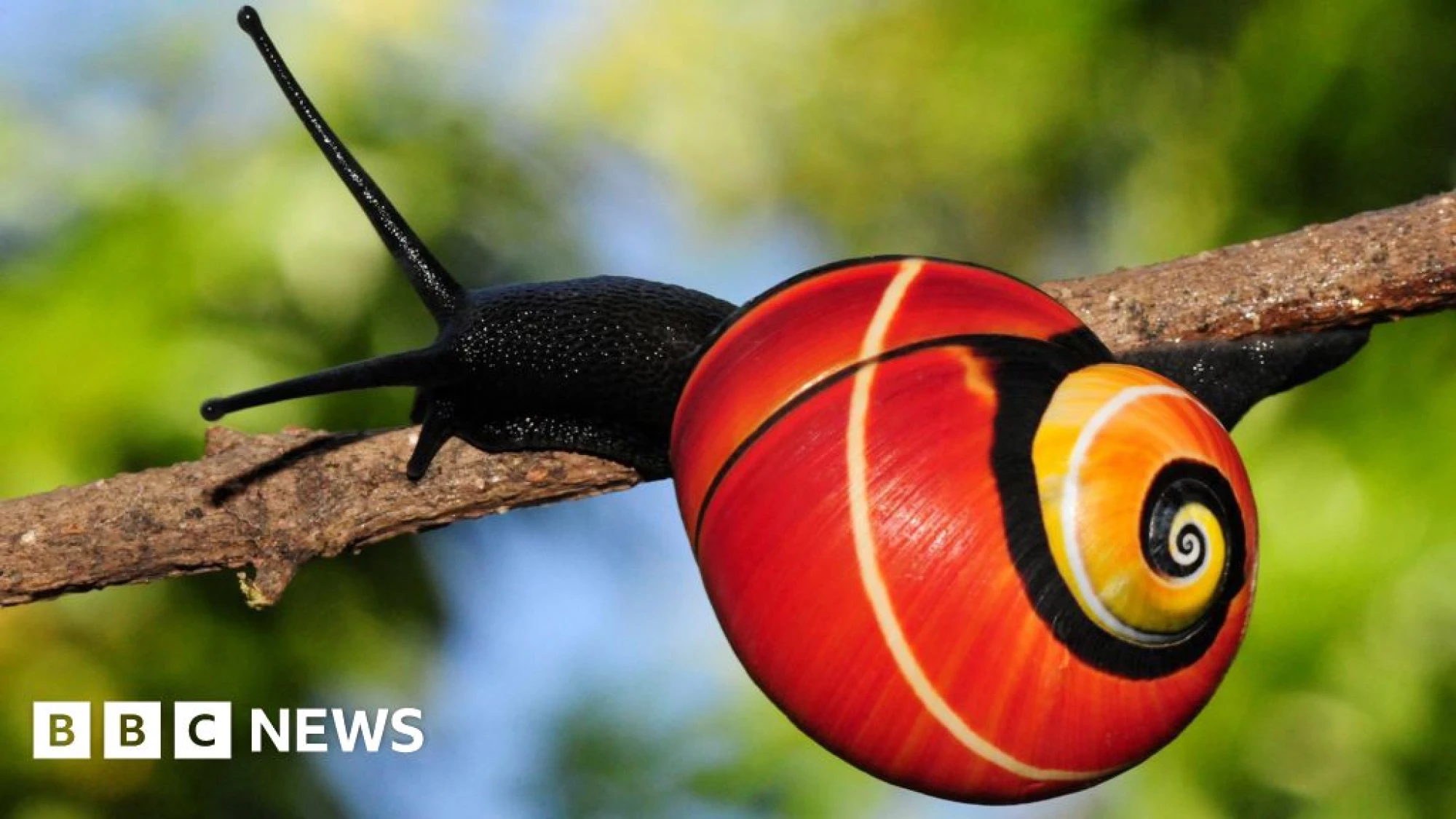Mission under way to save 'world's most beautiful' snails

Researchers in Cuba and the UK are working together to reveal the biological secrets of the beautiful but endangered Polymita snail.
Watch LiveBritish Broadcasting CorporationHomeNewsSportBusinessInnovationCultureArtsTravelEarthAudioVideoLiveHomeNewsIsrael-Gaza WarWar in UkraineUS & CanadaUKUK PoliticsEnglandN. IrelandN. Ireland PoliticsScotlandScotland PoliticsWalesWales PoliticsAfricaAsiaChinaIndiaAustraliaEuropeLatin AmericaMiddle EastIn PicturesBBC InDepthBBC VerifySportBusinessExecutive LoungeTechnology of BusinessFuture of BusinessInnovationTechnologyScience & HealthArtificial IntelligenceAI v the MindCultureFilm & TVMusicArt & DesignStyleBooksEntertainment NewsArtsArts in MotionTravelDestinationsAfricaAntarcticaAsiaAustralia and PacificCaribbean & BermudaCentral AmericaEuropeMiddle EastNorth AmericaSouth AmericaWorld’s TableCulture & ExperiencesAdventuresThe SpeciaListEarthNatural WondersWeather & ScienceClimate SolutionsSustainable BusinessGreen LivingAudioPodcast CategoriesRadioAudio FAQsVideoLiveLive NewsLive SportHomeNewsSportBusinessInnovationCultureArtsTravelEarthAudioVideoLiveWeatherNewslettersWatch LiveMission begins to save snails threatened by own beauty2 days agoShareSaveVictoria GillScience correspondent, BBC NewsShareSaveBernardo Reyes-TurA Polymita snail in its native forest habitat in Eastern Cuba Researchers have embarked on a mission to save what some consider to be the world's most beautiful snails, and also unlock their biological secrets.
Endangered Polymita tree snails, which are disappearing from their native forest habitats in Eastern Cuba, have vibrant, colourful and extravagantly patterned shells.
Unfortunately, those shells are desirable for collectors, and conservation experts say the shell trade is pushing the snails towards extinction.
Biologists in Cuba, and specialists at the University of Nottingham in the UK, have now teamed up with the goal of saving the six known species of Polymita.
The most endangered of those is Polymita sulphurosa, which is lime green with blue flame patterns around its coils and bright orange and yellow bands across its shell.
https://www.bbc.com/news/articles/clyrv8ndzzjo?at_medium=RSS&at_campaign=rss
Rating: 5